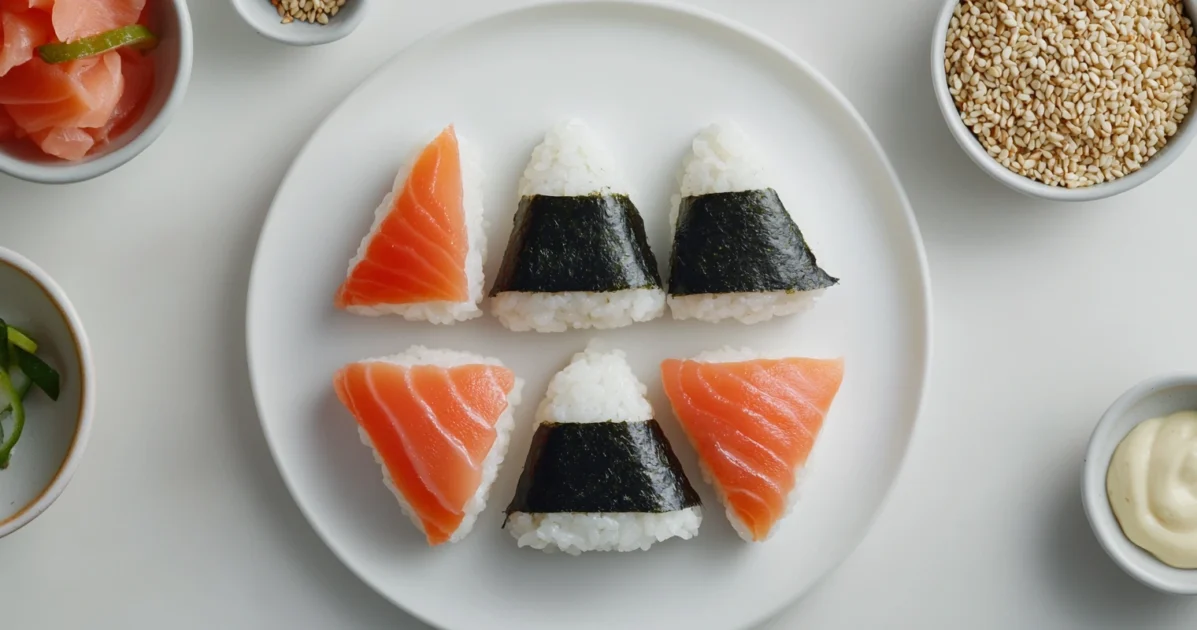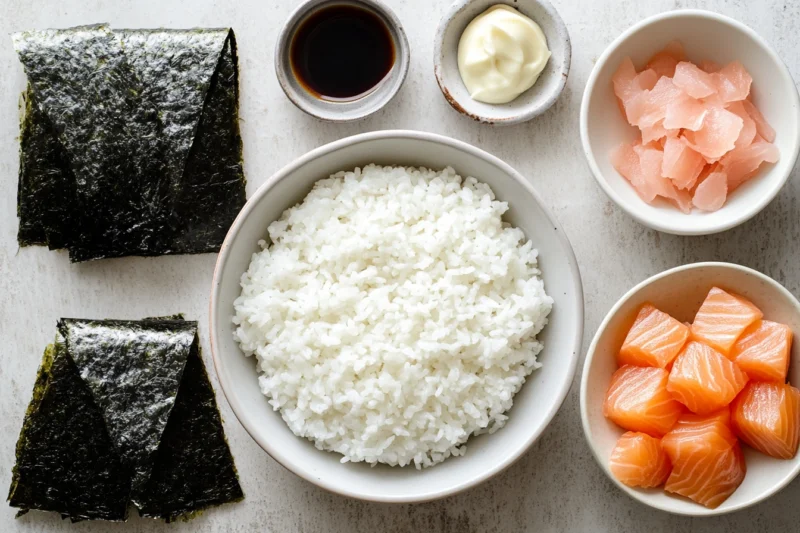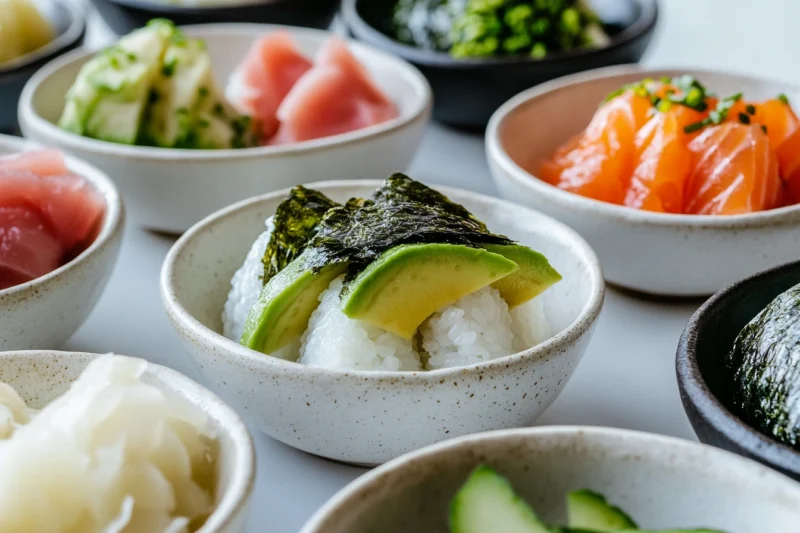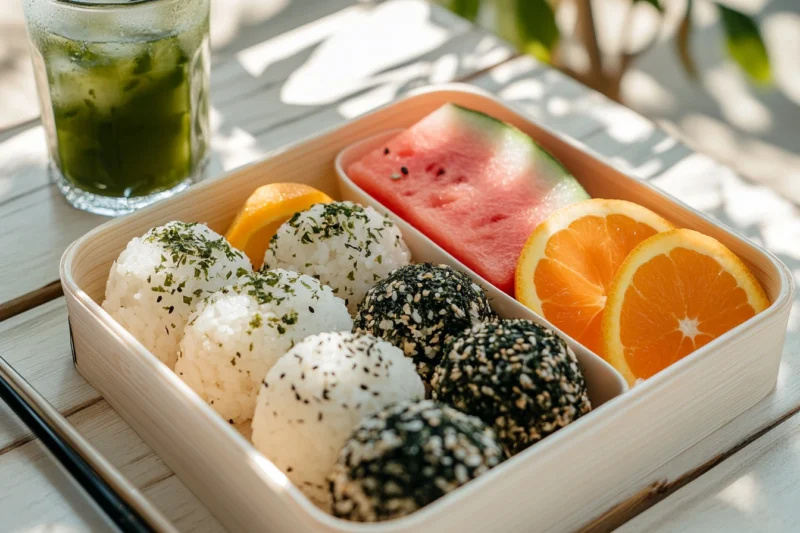Japanese rice balls, also called Onigiri, are one of Japan’s most famous and diverse food items. They are snacks made of seasoned Rice, usually filled with savory components and packed with nori (seaweed). Onigiri have been a popular snack in Japanese food for a long time and are adored because of their portability and simple taste.

Onigiri is the ideal choice if you’re in the market to eat a quick lunch or picnic food or an opportunity to add some Japanese traditions to your table. The most appealing aspect? It’s straightforward to prepare at home using only a few ingredients and some imagination. In this tutorial, we’ll teach you all you require about making delicious Japanese rice balls that taste just as delicious as they taste!
Table of Contents
What is the reason? Onigiri are a must-try snack?
Onigiri are much more than food; they express Japanese tradition and comfort. From the shelves of convenience stores in Tokyo and the school lunch boxes of Japanese schoolchildren, These rice balls hold an essential spot inside Japanese hearts. This is why they should have an appearance in your kitchen, too:
- Flexibility: Onigiri can be packed with everything, from salted salmon and tuna mayo to modern variations like avocado and spicy chicken.
- Onigiri is portable, easy to transport, and easy to eat, ideal for hectic days, outdoor activities, or lunchboxes.
- Nutritional: Made with energy-rich Rice and nutrient-rich fillings that provide satisfying and balanced snacks or meals.
- Connecting Culture: Onigiri provides an easy way to get a taste of Japanese traditions and culture from the comfort of your kitchen.
With endless possibilities, Onigiri has something for anyone!
Essential Ingredients for Creating Perfect Japanese Rice Balls
Making genuine Japanese rice balls starts by selecting the best ingredients. Here’s the essential ingredients:
- Rice short-grain: Japanese Rice or sushi rice is the perfect choice for Onigiri due to its sticky texture, which helps the Rice keep its shape.
- Fillings of choice: Traditional fillings include salted salmon umeboshi (pickled plum) or mayo-filled tuna. It is also possible to experiment with vegetarian options or fusion.
- Nori (seaweed): Adds a salty taste, making rice balls more manageable.
- Salt Salting lightly on your hands before making the Rice improves the flavor and keeps the Onigiri.
For extra flavor, sprinkle some Furikake (Japanese Rice seasoning) on your Rice or mix it with sesame seeds. These little touches can elevate your Onigiri to a whole new level!
Step-by-Step Instructions for the Making of Japanese Rice Balls
Making your own Onigiri at home is a lot easier than you believe. Follow these steps to create perfectly-shaped, tasty rice balls:

- Rice to cook: Wash 2 cups of short-grain Rice until the water is clear. Cook it in the rice cooker or stovetop using the correct water-to-rice ratio. After it is cooked, allow it to cool, but then keep it warm until you can shape it.
- Make your fillings. To ensure your filling is ready, shred cooked salmon, mix tuna and mayo together, or place the umeboshi in a small dish to make it easy to access.
- Shape the Rice: Soak your hands in water to avoid getting stuck. Sprinkle a bit of salt over your palms and scoop out a handful of Rice. Make sure to flatten the Rice slightly, add a teaspoon of filling into the middle, and shape your Rice into a triangle, ball, or cylindrical shape.
- Wrap nori around the rice balls: Cut your nori into strips and wrap them around your shaped rice balls. This adds taste and makes the dish easier to handle.
- Use or keep: Enjoy your Onigiri immediately, then wrap them in plastic wrap and store them in the refrigerator for up to a week.
Pro tip: Make sure to work quickly when the Rice is warm for the best texture and taste.
Innovative Fillings to Enhance Your Onigiri
Traditional fillings such as salted salmon or pickled plum are traditional choices. The possibilities for fillings with Onigiri are endless. Here are a few ideas to help you create your next batch of Onigiri:

- Spicy Tuna Blend canned tuna, mayonnaise, and sriracha for an intense, spicy flavor.
- Teriyaki Chicken is glazed and shredded in teriyaki sauce, providing a flavorful and slightly sweet note.
- Vegetarian Choices Serve avocado with a dash of soy sauce or stir-fried mushrooms for a plant-based spin.
- Bacon and Cheese: Add melted cheese and crispy bacon to make a fusion-style dessert.
Are you interested in exploring different Rice Ball recipes? Look at the Italian Rice Balls Recipe A Delicious Twist for a unique take on rice-based snacks!
Tips for Shaping the Perfect Onigiri
Finding the ideal form for your Onigiri is a challenge. However, these suggestions can help:
- Ensure your hands are humid: Wet hands prevent the Rice from sticking to your palms during making.
- Use gentle pressure. Apply pressure to the Rice hard enough to maintain its shape but not too much that it becomes hard and compact.
- Don’t fill too much: Use just enough filling to give flavor but without overpowering the Rice.
If you are a beginner, you can try an onigiri mold to create regular shapes until you get the hang of it!
A Fresh Twist: Onigiri to enjoy Summer Picnics
Onigiri isn’t just an old-fashioned snack; it’s the perfect complement to your picnic menu. Imagine eating these delicious rice balls in the sunshine, served with fresh fruits and a cold beverage. To make your Onigiri ready for summer, take a look at these suggestions:
- Infused with citrus rice: Add a splash of lemon juice or yuzu to the Rice to create an effervescent flavor that goes well with grilled fish and vegetables.
- Light fillings: Choose refreshing choices like cucumber slices, avocado slices, or pickled ginger, which are all light but satisfying.
- Vibrant Toppings Sprinkle bright, fresh shiso or furikake over the top to add a visually beautiful and tasty addition.

Place your Onigiri in a bento container with crisp soups, salads, cold noodles, and seasonal fruit to create a delicious summer meal. Onigiri isn’t just a snack that can be used in many ways; it’s also perfect for outdoor outings!
Conclusion
Japanese rice balls (Onigiri) They’re a great, tasty way to experience an element of Japanese tradition at home. With endless fillings and easy preparation, these rice balls are perfect for every occasion, from snack time to picnics. Try traditional fillings or explore fusion options. Do not forget to check out the Italian Rice Balls recipe for a delicious rice-based snack. Enjoy cooking!
FAQs on Japanese Rice Balls (Onigiri)
Do I make Onigiri without Nori?
You can undoubtedly make Onigiri using nori! Although nori provides a beautiful salty taste and makes rice balls easier to handle, it’s not a requirement. If you’d prefer, sprinkle your rice balls with sesame seeds and furikake (Japanese rice seasoning) and wrap Onigiri in lettuce leaves as another option.
What is the best way to store Onigiri?
To store Onigiri, put them in a separate bag of plastic wrap to prevent drying. Make sure they are kept at room temperature when eating within a couple of hours, or store them in a refrigerator for up to a week. For storage that lasts longer, be sure to wrap the nori in plastic wrap until just before eating, as the seaweed may become watery in the fridge.
Can I use regular long-grain Rice to make Onigiri?
Although long-grain Rice, like jasmine or basmati, is possible to use for sushi, it isn’t recommended. Its sticky texture is different from that of Japanese short-grain Rice, making it more difficult to shape and keep together. Choose Japanese sushi rice or other short-grain varieties to achieve the best results.
Are Japanese Rice Balls Gluten-Free?
Yes, Onigiri can be gluten-free since they’re made from Rice, salt, and nori. If you’re planning to add fillings such as miso paste or soy sauce, be sure to check the label to confirm that they’re gluten-free because some brands might contain wheat.
How do I prevent Onigiri from deteriorating?
If your Onigiri is falling apart, the Rice is not as sticky as it should be. Ensure you’re using short-grain Rice, then cook it using the proper ratio of Rice to water. Also, wash your hands and apply soft but hard pressure to shape the Rice to ensure that it is held in its shape.
Can I Make Onigiri Sweets?
Yes! While traditionally, Onigiri is cooked savory, you can also create dessert versions using red bean paste (anko) or combining Rice with coconut milk and sugar. For a dessert-like delight, make them into balls with sesame seeds or drizzle them with honey.
What are some Common Onigiri shapes?
The most commonly used onigiri forms are triangular, round, and Cylindrical. The most famous is Onigiri, which has triangles and is usually wrapped with nori strips. Round Onigiri are more straightforward and ideal for novices. In contrast, cylindrical ones are typically used to create platters for parties or unique displays.
Can I Freeze Onigiri Using Fillings?
Yes, but it all depends on what filling you choose. Onigiri filled with fillings such as umeboshi or salted salmon freeze easily and are kept for up to one month. Wrap each one tightly in plastic wrap, then place the Onigiri in a freezer-safe container. Do not freeze fillings made with mayonnaise, such as tuna, as the texture could change on the thawing.